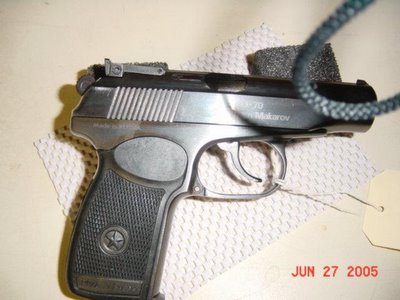
Just plunked down a deposit on this beauty!
The Springfield Armory "SOCOM 16", so named for its handily-short 16" barrel.
The handiness of a carbine with the full power of a battle rifle!
The upward-directed gas flow is said to mitigate barrel rise significantly.
I find the rifles of the venerable WW2-era M1 Garand family, of which I consider this to be a modern descendant, to be extraordinarly beautiful to behold.
They are of the tradition of the functional yet elegant "Kentucky" longrifles of the pioneers (actually of Pennsylvania design).
The impetus, however, to embellish them with ornate, baroque designs I find an abomination. The simpler the better.
I have seen displays of earlier crossbows and rifles at museums, that are so carved and engraved as to qualify as "art", to a degree that annoys me. I cannot abide such pointless decorations.
The beauty of the rifles I enjoy is a natural outgrowth of their function.
I find nothing appealing in modern assalut-style rifles with their space-age angles and plastic moldings.
The clean utilitarian lines of the "greatest battle implement ever devised", in the words of Gen. George Patton, are the epitome of the combat rifle's development.
The SOCOM 16 will join in my cabinet the following genuine U.S. military surplus rifles, obtained through the Civilian Marksmanship Program:
-- A 1950s Harrington and Richardson M1 Garand
-- A 1945 Springfield M1 Garand
-- An M1903A3
-- An M1903A4
Not to forget my first rifle, a Remington .22LR!
Both Garands appear to be in wonderful shape for their age. This is a Garand:

My Springfield Garand has a darker walnut-stained stock than in the photo.
The H&R may have seen service in Korea; who knows? It was then sent to Greece as a NATO ally before being repatriated to the U.S. Army.
The WW2-era Springfield was probably made too late to see action. That may account for its reasonably good condition.
In fact, according to its serial number, and the known range of numbers manufactured in April, 1945, the astonishing fact is, given the assumption of constant daily production, it was likely produced on the very day of my Mother's 5th birthday! (Happy Birthday! What a nice present!)
The M1903A3 is still coated in thick storage grease; the Garands were not. Yuck! This is an A3:

Those WW2-production bolt-action rifles were stamped-out copies of the venerable WW1-era M1903 design, that itself was based on the fine German Mauser of the late 19th century. They were hastily produced to fill the early wartime shortage of the semi-automatic Garands.
I had the good fortune to win a lottery to buy the M1903A4 -- that was a model made to tighter tolerances as the favored sniper rifle of the war. Have to get a scope for it!
To round out my collection of the major .30 caliber rifles of WW2, I just have to get an authentic U.S.G.I. M1 Carbine.
(There were some other rifles used in much smaller numbers that I won't go into, and I have no desire to get the BAR, which was basically a squad machine gun. A Thompson submachinegun would be cool, but getting a fully automatic one is complicated, and it's not .30 caliber anyway. I'll be "satisfied" the collection is complete with the carbine...)
When civil disorder breaks out, instead of worrying about damaging my pieces of history, I'll grab the SOCOM 16!
I am deficient in pistols. Only have a Russian Makarov in .380 caliber. Devilishly simple little machine, basically a simplified Walther. Inexpensive, rugged, reliable.
As this review states,
The Mak is a very simple design. Looking at the little manual (thankfully it is not printed in Russian) I see that the whole pistol uses only 41 different parts. And of those, 12 are just the sights. 3 are the grips and 4 others are the magazine. This is not a complicated gun. In fact, the rear sight on this commercial model is more complicated than most of the rest of the gun. Take down is about as simple as it gets.What an interesting piece of Cold War history.
...
It’s so simple that even an uneducated army conscript from a cabbage farm can do it. That means anyone; even a first time novice can do it. There are no “tricks” to it. It really doesn’t get much simpler than this.
Here is a photo of a Mak:

Maybe I'll get a Kel-Tec P3-AT for concealability and common caliber, though I believe revolvers to be more "panic proof" for actual concealed carry applications. A Taurus titanium ultralight in .38 Special +P with an internal hammer would do the trick...just like mom's...
